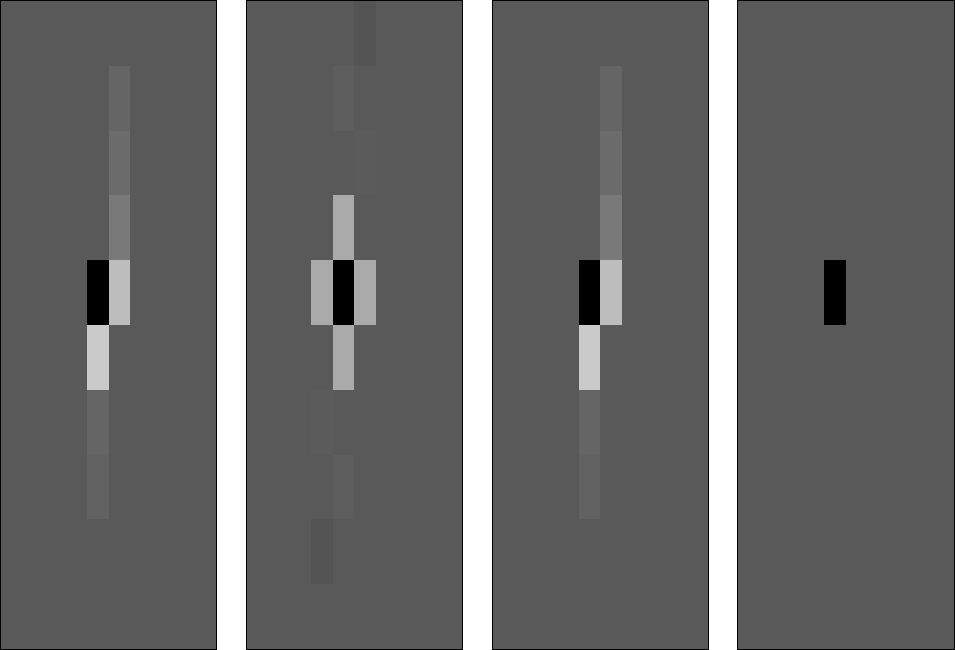 |
Figure 3 Wilson factorization of the Laplacian. From left to right: the input filter; its auto-correlation; the factors obtained with the Wilson-Burg method; the result of the deconvolution using the Wilson-Burg factors.
In a first example, we applied the method to deconvolution on the helix Claerbout (1997) using the factors obtained with the Wilson-Burg spectral factorization. We take the auto-correlation to be the negative of the Laplacian operator, and convolve it with a spike placed in the middle of each panel in Figure 3. We use the Wilson-Burg method to find the wavelet with this auto-correlation and then deconvolve (do polynomial division) on the helix to find back the input spike.
 |
In another example, we analyzed the rate of convergence of the Wilson-Burg method. We selected a simple polynomial which is the cross-correlation of two triangle functions,
| (14) |
| iter | A | B |
| 1 | 0.0364715122 | 0.0442032255 |
| 2 | 0.0029259326 | 0.0002011458 |
| 3 | 0.0000014305 | 0.0000000199 |
| 4 | 0.0000000894 | 0.0000000199 |
| 5 | 0.0000000596 | 0.0000000000 |
| 6 | 0.0000000000 | 0.0000000000 |